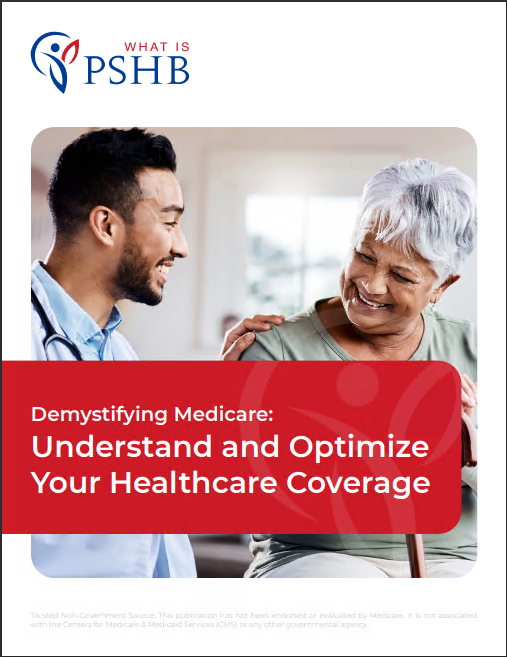Key Takeaways:
-
PSHB Open Season is a big deal for Postal Service employees and annuitants. You have a limited window to review, switch, or adjust your health plan for the coming year.
-
Medicare-eligible postal retirees may have new requirements that impact PSHB coverage, so it’s critical to understand how Medicare integration could affect your plan options and premiums.
Understanding the PSHB Program
The Postal Service Health Benefits (PSHB) program is the new kid on the block for postal employees, annuitants, and eligible family members. Replacing the Federal Employees Health Benefits (FEHB) program, PSHB is tailored to meet the needs of USPS employees and retirees starting in 2025. This Open Season is the first chance you have to choose your PSHB plan, make any changes, or confirm that your automatic enrollment matches your needs. With Open Season happening from November 11 to December 9, it’s time to dig into your options.
Who Needs to Participate in PSHB Open Season?
If you’re a current postal worker, retiree, or an eligible family member covered under the FEHB program, this Open Season matters. Current FEHB enrollees will be automatically enrolled in a comparable PSHB plan that aligns with their existing benefits. However, taking the time to review your options is strongly encouraged—this is your health we’re talking about, after all!
For those already retired or Medicare-eligible, there are some specific considerations to keep in mind. Medicare-eligible retirees, particularly those retired on or before January 1, 2025, may have the option to avoid mandatory Part B enrollment, while others might be required to enroll in Medicare Part B to retain PSHB coverage. Knowing where you stand on these points can save you headaches (and potentially money) down the line.
Key Dates: When Is Open Season?
Mark your calendars because Open Season is a limited-time event running from November 11 to December 9, 2024. This period is your chance to:
- Review your automatic enrollment option: Is the plan you’re being moved into the right one for you?
- Explore alternatives: If the standard plan doesn’t fit your needs, look around.
- Make adjustments: This could be adding or removing family members or choosing a more suitable plan based on your health needs.
Changes you make during this period will take effect on January 1, 2025, so it’s worth setting aside a bit of time to weigh your options now rather than regretting a hasty choice later.
Why PSHB Is Different
With the PSHB, the Postal Service aims to provide benefits specifically for its workforce and retirees, which brings both positives and some new requirements to consider. One of the biggest changes is that PSHB requires certain Medicare-eligible annuitants to enroll in Medicare Part B.
For postal retirees who have turned 65 and are eligible for Medicare, this means extra planning is essential. However, exceptions exist for those who retired on or before January 1, 2025, so be sure to double-check your eligibility status if Medicare enrollment isn’t part of your current plan.
Making Sense of Plan Options
Let’s face it: choosing a health plan can feel overwhelming. Fortunately, PSHB has streamlined the process, but you still want to make an informed choice. The PSHB offers a range of options, from basic plans with lower premiums to more comprehensive plans that cover more health needs. Here are a few things to keep in mind as you weigh your choices:
- Coverage Level: Are you looking for a plan that covers more routine doctor visits, or do you need something more robust?
- Premiums and Deductibles: Consider your monthly premiums against deductibles and other out-of-pocket costs.
- Prescription Drug Coverage: Do you have regular prescriptions? If so, make sure the plan you choose includes adequate drug coverage.
By comparing plans and understanding your own needs, you’re more likely to choose a PSHB plan that truly supports your health.
The Medicare Integration Factor
For Medicare-eligible postal retirees, PSHB brings a significant update: Medicare Part B enrollment might be required to retain PSHB coverage. This integration has its perks—many retirees find that Medicare coordination reduces their out-of-pocket costs by filling in the gaps in coverage—but it can come as a surprise if you’re not prepared.
Keep these points in mind about the Medicare-PSHB relationship:
- Mandatory Part B Enrollment: Only certain retirees must enroll in Medicare Part B. Those who retired on or before January 1, 2025, and are not enrolled in Part B may be exempt from this requirement.
- Potential Cost Savings: With Medicare acting as your primary coverage, PSHB becomes secondary, potentially covering the remainder. This setup can reduce what you pay for doctor visits, hospital stays, and other medical expenses.
If you’re eligible for Medicare and wondering whether enrolling in Part B makes sense, PSHB’s customer service team or a Medicare advisor can help you sort through the specifics based on your unique situation.
Preparing for the Enrollment Process
If this is your first Open Season with the PSHB, don’t worry—the process is similar to FEHB’s Open Season but tailored to USPS employees and retirees. Start by reviewing your automatic enrollment plan option, then use any available resources to compare other plans if you want to explore additional choices.
Steps for a Successful PSHB Open Season:
- Log in to Your USPS Employee Portal: If you’re active, log in to the employee portal to view your current plan and compare new options.
- Access Plan Comparison Tools: Use PSHB’s online tools to see which plan features best align with your needs, whether you’re focused on low premiums or comprehensive coverage.
- Make Adjustments as Needed: If your situation has changed (maybe you’re adding or removing dependents), this is the time to adjust your coverage to ensure everyone’s covered.
What Happens If You Don’t Make Changes?
If you’re comfortable with your automatically assigned PSHB plan, you don’t have to do anything at all. You’ll be seamlessly transitioned to the corresponding plan starting on January 1, 2025. But bear in mind, what worked last year might not be the best fit for your current health needs or financial situation, so it’s always worth reviewing your choices.
Coverage Kicks in for 2025
Any changes or updates you make during this Open Season will take effect on January 1, 2025. That means you have coverage locked in for the new year based on your choices. If you’re switching from a more limited plan to a comprehensive one, you’ll see those new benefits in action starting the first of the year.
Don’t Miss Out on Added Benefits
Beyond basic medical coverage, PSHB plans often offer a few extra perks. It’s a good idea to check out these additional benefits, which may include:
- Wellness Incentives: Some plans may offer wellness programs with incentives for participating, such as discounts or bonuses for meeting health goals.
- Preventive Care at No Extra Cost: Many PSHB plans cover preventive screenings, immunizations, and wellness checkups, so you can take proactive steps in managing your health.
By exploring these features, you can maximize your plan’s value and feel confident that you’re not leaving anything on the table.
Choosing the Right Plan for You
In the end, PSHB Open Season is about taking charge of your health coverage. Each plan within PSHB offers different levels of coverage and costs, so understanding your specific health needs, budget, and any Medicare requirements will guide you toward the best plan. Keep in mind that, while automatic enrollment takes some guesswork out of the equation, an informed review ensures you won’t be hit with surprise costs or gaps in coverage when 2025 rolls around.
Ready to Make Your PSHB Choice?
This Open Season, take a moment to make sure your PSHB plan aligns with your health and financial needs for 2025. Whether it’s automatic enrollment or a new choice you’re after, a few minutes of planning can set you up for a healthier and more secure year ahead.












